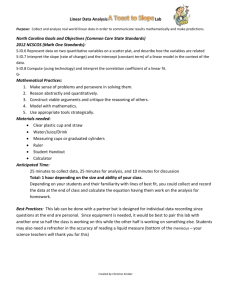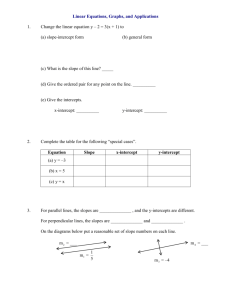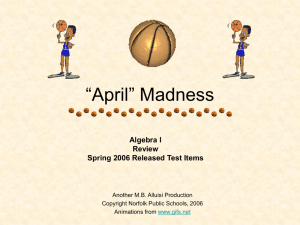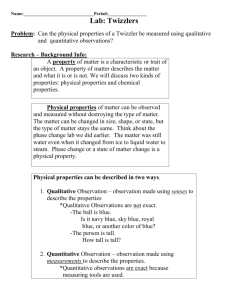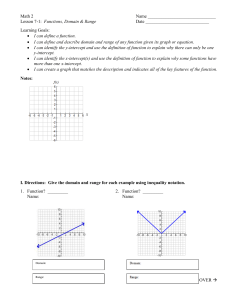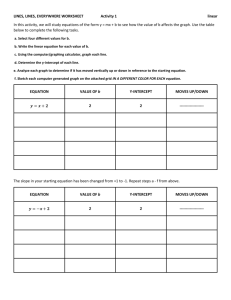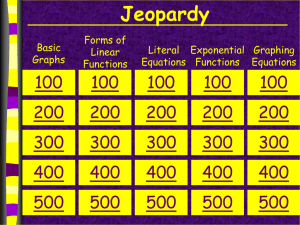S.ID.6.7.8 Linear Data Analysis_Twizzler lab
advertisement
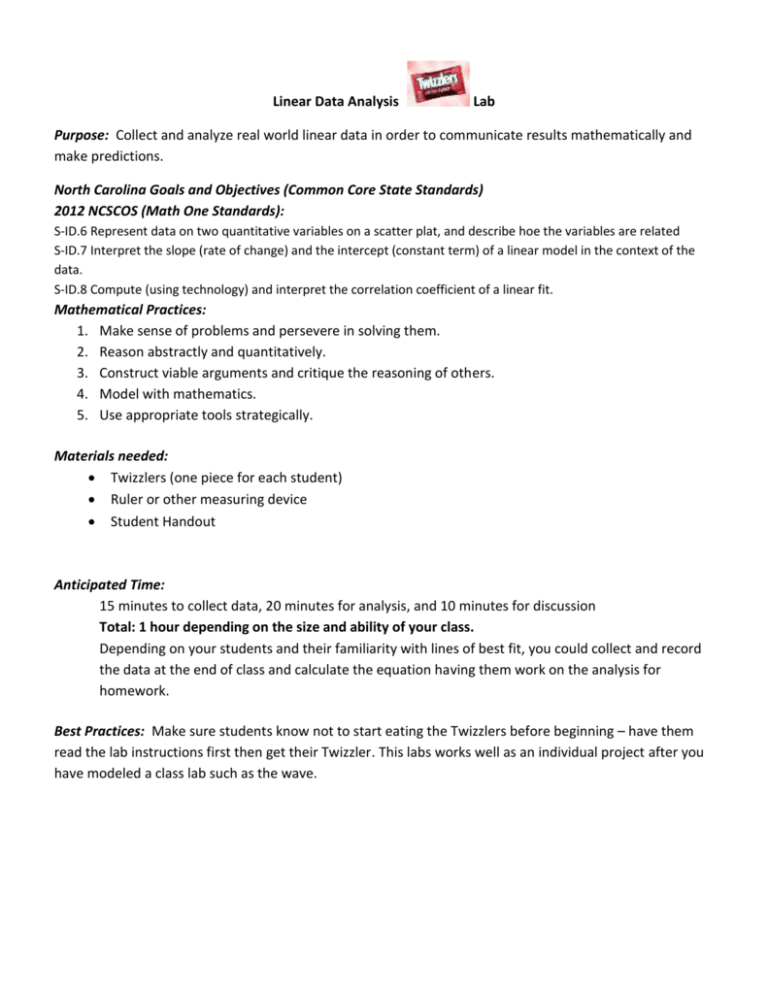
Linear Data Analysis Lab Purpose: Collect and analyze real world linear data in order to communicate results mathematically and make predictions. North Carolina Goals and Objectives (Common Core State Standards) 2012 NCSCOS (Math One Standards): S-ID.6 Represent data on two quantitative variables on a scatter plat, and describe hoe the variables are related S-ID.7 Interpret the slope (rate of change) and the intercept (constant term) of a linear model in the context of the data. S-ID.8 Compute (using technology) and interpret the correlation coefficient of a linear fit. Mathematical Practices: 1. Make sense of problems and persevere in solving them. 2. Reason abstractly and quantitatively. 3. Construct viable arguments and critique the reasoning of others. 4. Model with mathematics. 5. Use appropriate tools strategically. Materials needed: Twizzlers (one piece for each student) Ruler or other measuring device Student Handout Anticipated Time: 15 minutes to collect data, 20 minutes for analysis, and 10 minutes for discussion Total: 1 hour depending on the size and ability of your class. Depending on your students and their familiarity with lines of best fit, you could collect and record the data at the end of class and calculate the equation having them work on the analysis for homework. Best Practices: Make sure students know not to start eating the Twizzlers before beginning – have them read the lab instructions first then get their Twizzler. This labs works well as an individual project after you have modeled a class lab such as the wave. Student Name______________________________________________ Date ______________Class Period ______ Number of bites Length of Twizzler 0 Collecting and Analyzing Data Directions: 1. Measure the length (in centimeters) of the Twizzler and record the length. 2. Take a bite from the Twizzler and measure the remaining length. Record. 3. Repeat step 2 until you have finished your candy. Try to take approximately the same size bite each time. a. What is the independent variable(x)? _______________________________ What is the dependent variable (y)? _______________________________ Why? _______________________depends on __________________________ 3. Enter the data points into your lists in the calculator and graph the results. Adjusting your window may be necessary. Draw a sketch of the data below with accurate axis labels. Are the points scattered all around the plane or do the points tend to be a certain shape? What shape does your data appear to represent? ____________________ Do any points seem out of place? Why or why not? 4. If your data appears to be linear, determine the equation of the line using your graphing calculator. Round all decimals to 2 places. y = __________________________________________________ 5. What is the slope of your line? _______________ 6. What does the slope mean in the context of this data? During data collection, what factors might have affected the slope? (𝒙, 𝒚) 7. What does each point on this line represent in the context of this data? ( (𝑰𝒏𝒅𝒆𝒑𝒆𝒏𝒅𝒆𝒏𝒕 𝑽𝒂𝒓𝒊𝒂𝒃𝒍𝒆, 𝑫𝒆𝒑𝒆𝒏𝒅𝒆𝒏𝒕 𝑽𝒂𝒓𝒊𝒂𝒃𝒍𝒆) , 8. What is the y-intercept of your equation? ( 0 , ) 9. What does the y-intercept mean in context of this data? 10. What is the x-intercept of your equation? ( , 0 ) Show work: Remember: to calculate the x-intercept, let y=0 in the equation 11. What does the x-intercept mean in context of this data? 12. Do you think your equation is a good model of the data? Why or why not? Defend your answer mathematically 13. Make Predictions using your equation: Based on the data collected, approximately how many bites would it take for you to eat a Twizzler that is twice as long? Show work: Based on the data collected, how many Twizzlers would be consumed in 350 bits? Show work: Based on the data collected, approximately what length would a Twizzler be if it was consumed in 65 bites? How many Twizzlers of your length would your answer Be equivalent to? Show work: Based on the data collected, how many bites would it take to consume a Twizzler that would be the length of the equator? Equator = 24,901.5 miles, 1mile = 5280 feet, 1ft = 12 in 1in=2.54cm Show work: )
